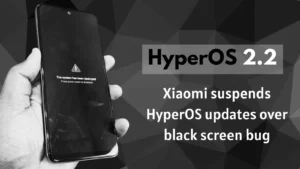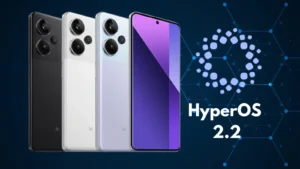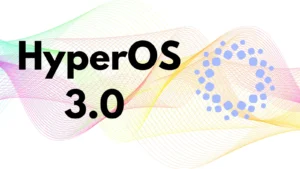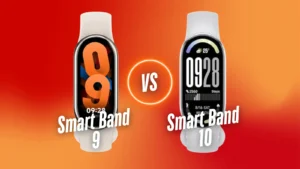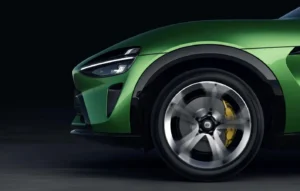Xiaomi HyperOS 3: Liquid Glass UI Revolutionizes Android Experience
Xiaomi HyperOS 3: Liquid Glass Design Set to Revolutionize the User Experience
Xiaomi’s about to drop a major update that could change how we interact with our phones. We’re talking HyperOS 3, and leaked info suggests it’s a game-changer. This article dives deep into the “Liquid Glass” design, explores what we know from leaks (including those juicy bits from Digital Chat Station!), and discusses the potential impact on Xiaomi, Redmi, and POCO users. Get ready, because this is big.

A “Liquid Glass” Design Inspired by… iOS?
“Liquid Glass” isn’t exactly a new term, but it’s one that’s gotten a lot of attention lately, especially with Apple’s iOS 26. It’s all about that smooth, translucent look, with subtle blurs and depth effects creating a really immersive feel. Xiaomi’s HyperOS 3 seems to be taking a page from that playbook (a very stylish page, might I add!), but with its own unique spin. Think cleaner, more minimalist, and undeniably Xiaomi. It’s not just about competing; it’s about setting a new standard for Android customization.
The key features of this “Liquid Glass” design? Rounded icons, that almost frosted-glass blur effect, and super-smooth animations. It all adds up to a really polished look. Even the home screen search bar is getting a makeover—gone is the traditional fixed bar, replaced by more dynamic widgets and elements. This design shift aims to minimize visual clutter and generally make the user experience smoother, a boon for both mid-range and high-end devices.
Leaks and Whispers: What Do We Know?
The first glimpses of HyperOS 3 came from a rather accidental leak: a user survey distributed by Xiaomi in China. Oops! The survey included screenshots of the new interface, promptly spreading like wildfire across Weibo and X. These images revealed significant redesigns, impacting app icons, the control center, and even the battery indicator (which now sports a familiar Apple-esque design). While subtle, this last change might make it easier for iPhone users to transition to a Xiaomi device.
Digital Chat Station, a highly reputable leaker in the Chinese tech scene, has also chimed in with additional details. DCS’s posts suggest HyperOS 3 isn’t just a visual refresh; it’s also about improved readability and consistency across system apps. The control center has been revamped for a more intuitive experience, and the icons boast a more uniform and sophisticated design, giving the whole OS a much more premium feel.
Another significant leak points to HyperOS 3’s impressive compatibility: it’s expected to support a whopping 96 devices! That breaks down to 33 Xiaomi, 44 Redmi, and 19 POCO models. This widespread compatibility shows Xiaomi’s commitment to delivering this improved visual experience across their entire range, not just the flagship models.
A Strategic October Launch
The official debut of HyperOS 3 is slated for October 2025, cleverly coinciding with the launch of the Xiaomi 16 series (Xiaomi 16 and 16 Pro). This isn’t a coincidence; Xiaomi’s clearly tying their new OS to their flagship devices, reinforcing their presence in the high-end market. It will be based on Android 16, although some older devices might stick with Android 15, ensuring optimized performance across a range of hardware. This dual-base approach allows Xiaomi to maximize compatibility and offer the latest security updates and Google features while maintaining a unified experience.

Inspiration from iOS, But with a Xiaomi Twist
Let’s be clear: While the resemblance to iOS 26 is undeniable, Xiaomi isn’t just copying. They’ve adapted the “Liquid Glass” concept to fit the preferences of their user base, who value Android’s customization and flexibility. Instead of Apple’s more dynamic animations, HyperOS 3 seems to prioritize subtlety and readability—visual effects that enhance, not hinder, usability.
The giant folders and blurs add a modern touch but are designed to work seamlessly with Xiaomi’s custom widgets and system apps. Removing the traditional search bar contributes to a more minimalist approach, highlighting apps and widgets for a cleaner, personalized experience.
Social Media Buzz
The tech community’s response to the HyperOS 3 leaks has been, for the most part, enthusiastic. Many on X have praised the “Liquid Glass” style, with particular mentions of the redesigned control center and icons. There’s a general consensus that the visual improvements are stunning and that the overall user experience will receive a substantial upgrade.
However, some concerns have been raised regarding the resemblance to iOS, with a few suggesting Xiaomi should focus more on unique innovation. Even so, the majority view HyperOS 3 as a major step forward for Xiaomi’s OS.
What Does It Mean for Users?
For Xiaomi, Redmi, and POCO users, HyperOS 3 promises a significant upgrade combining modern aesthetics with functional improvements. The wide device compatibility means even owners of older models can enjoy the new interface. Tools like HyperOSUpdates.com and the MemeOS Enhancer app on Google Play Store offer early access to advanced features and customizations for those eager to explore.
The big question is whether HyperOS 3 can truly stand out in a crowded market. Xiaomi’s strategy of combining premium design with broad compatibility might be the key to attracting both new users and those looking for an alternative to iOS.
Conclusion
HyperOS 3 represents a significant leap forward for Xiaomi’s UI. With its “Liquid Glass” design—inspired by, but not a copy of, iOS 26—Xiaomi aims for a visually appealing and functionally robust experience. Leaks suggest this update will not only enhance the aesthetics of Xiaomi devices but also solidify its position as a major player in the global smartphone market. Scheduled to launch alongside the Xiaomi 16 series in October 2025, HyperOS 3 has the potential to redefine what users expect from a mobile OS. The coming months will tell if Xiaomi can fully deliver on the immense promise of these leaks.
